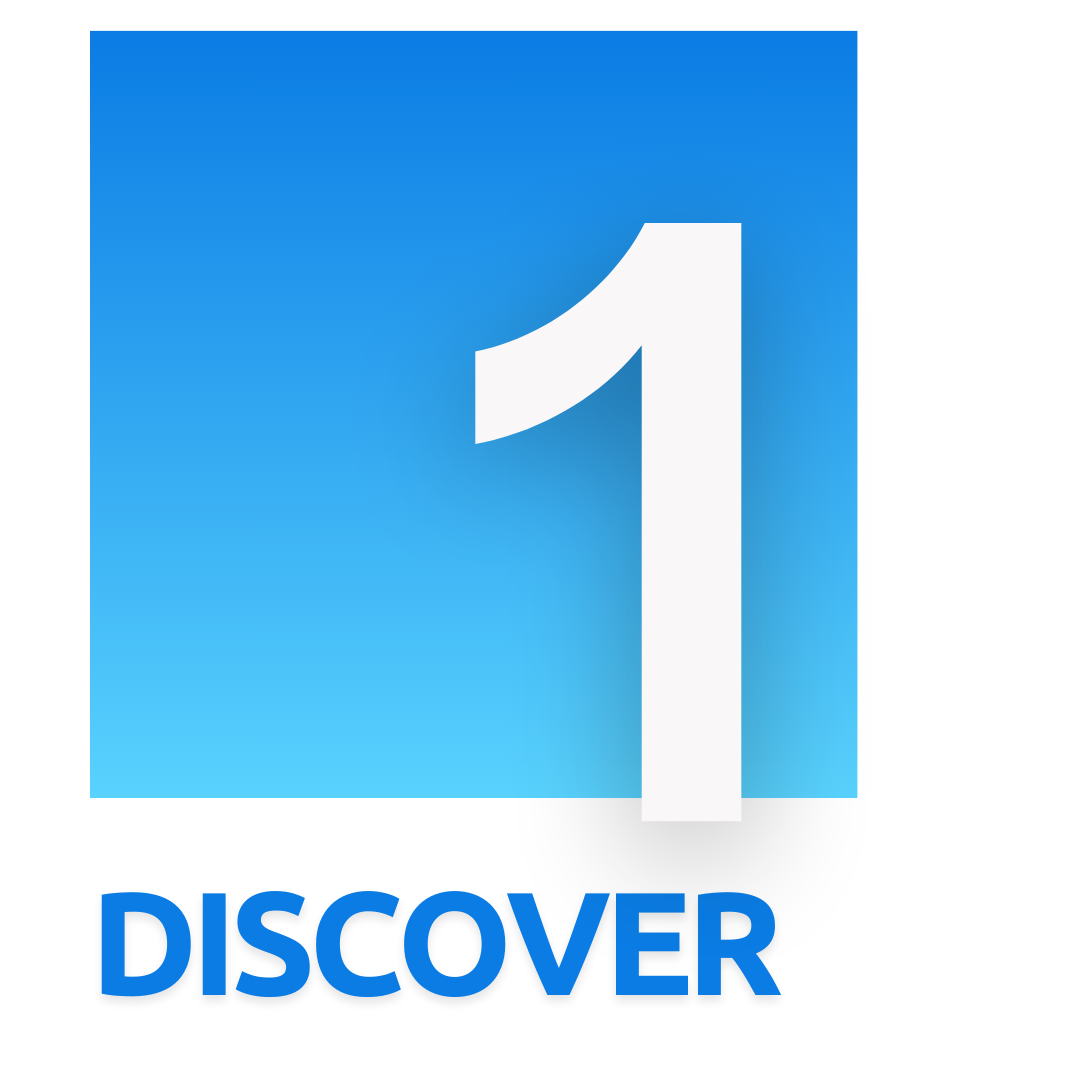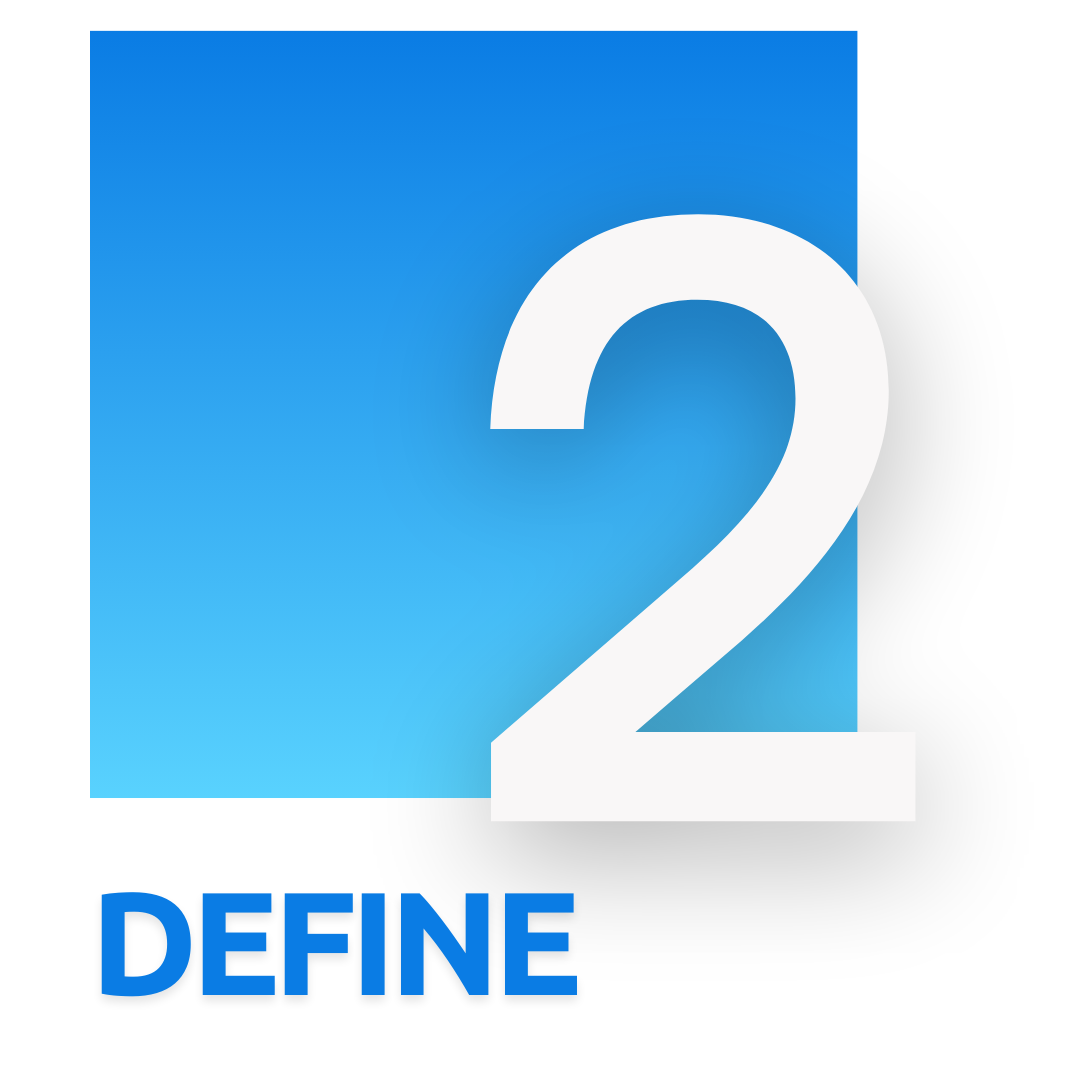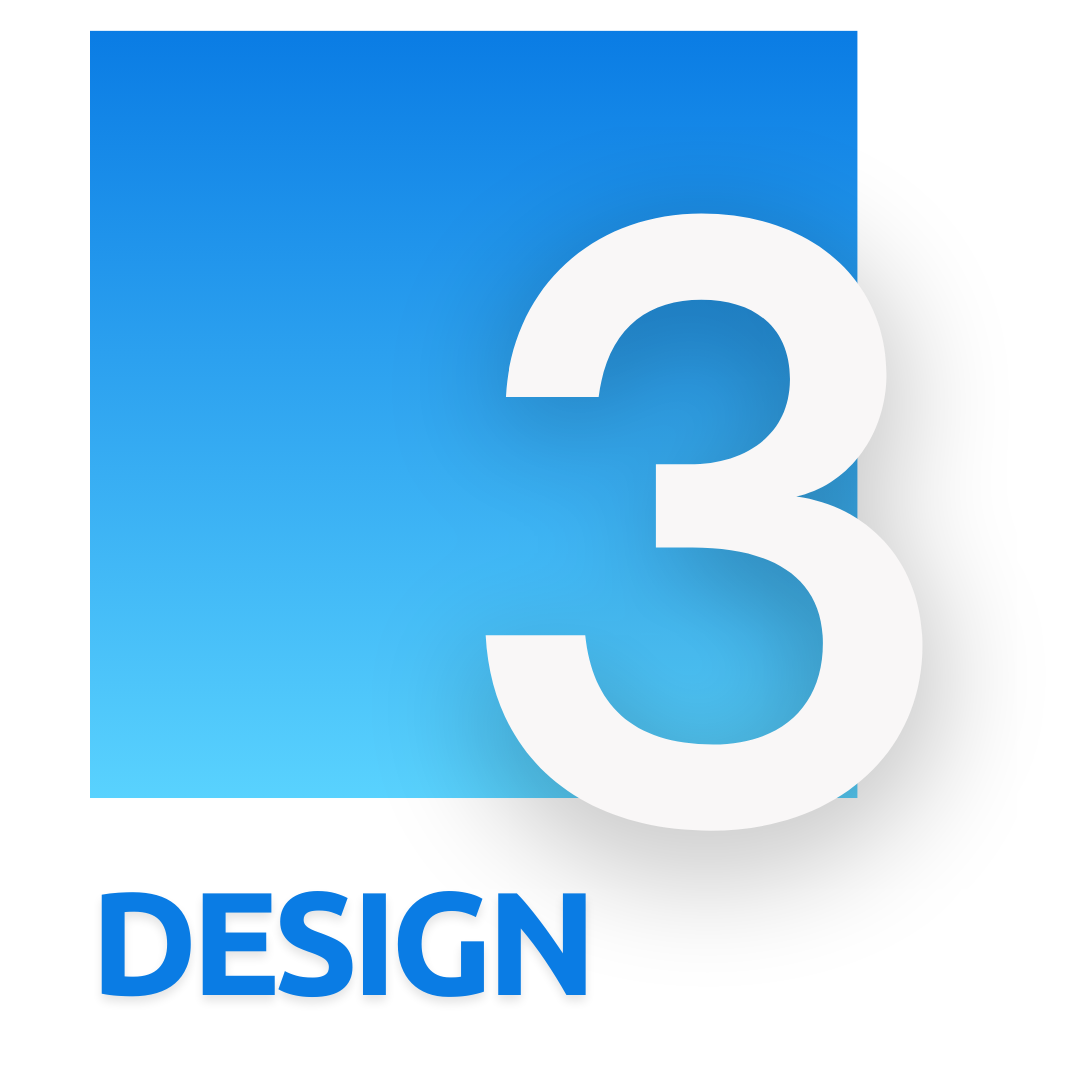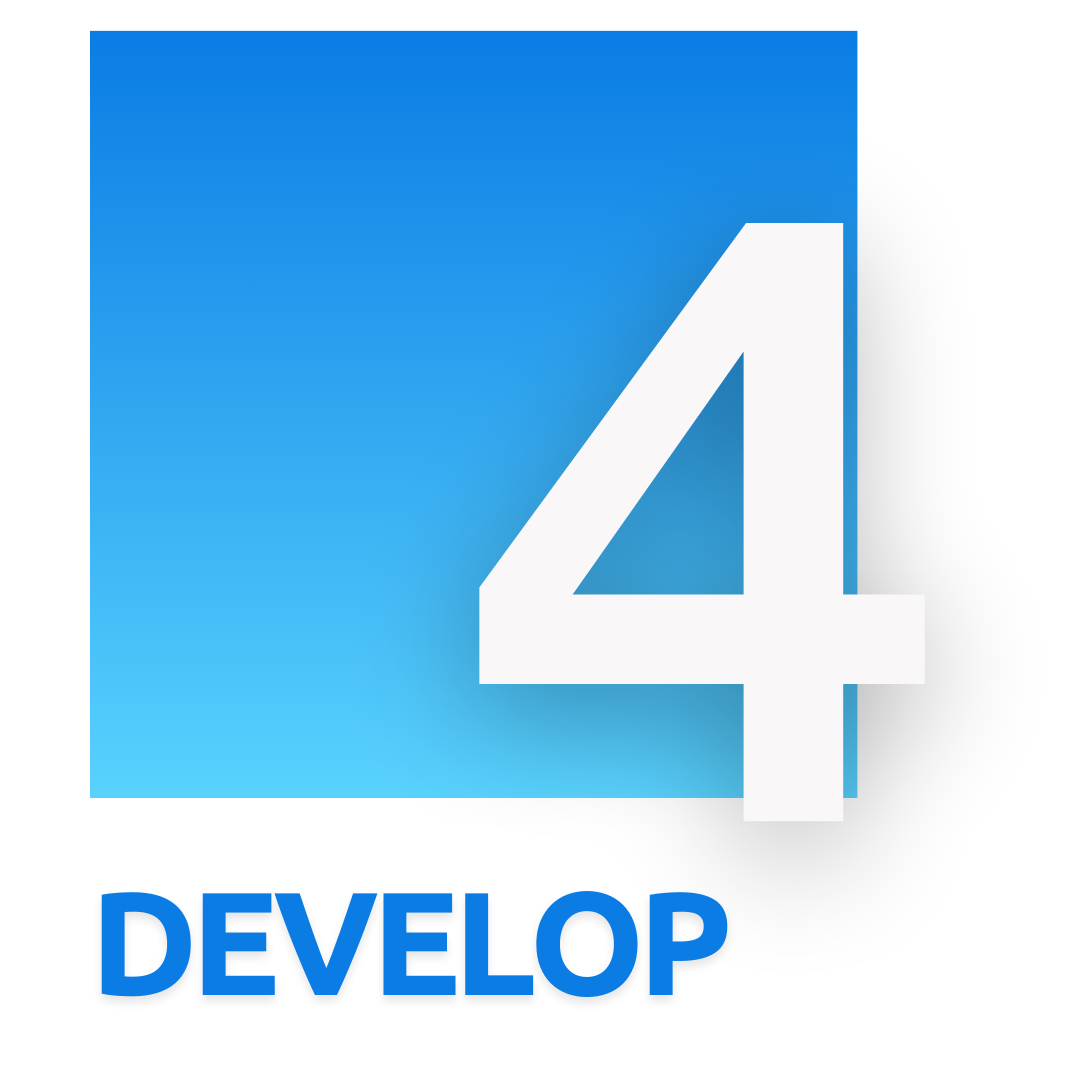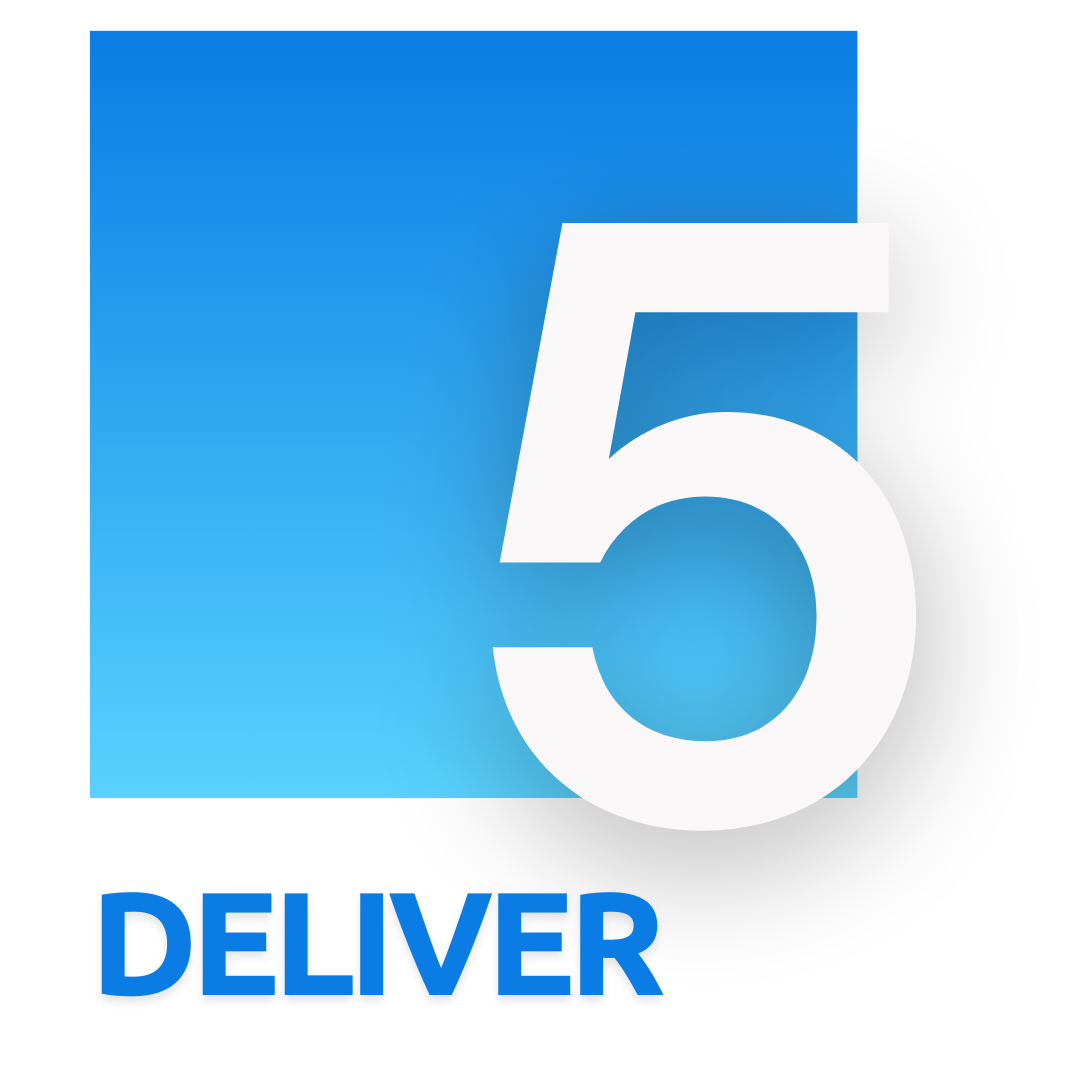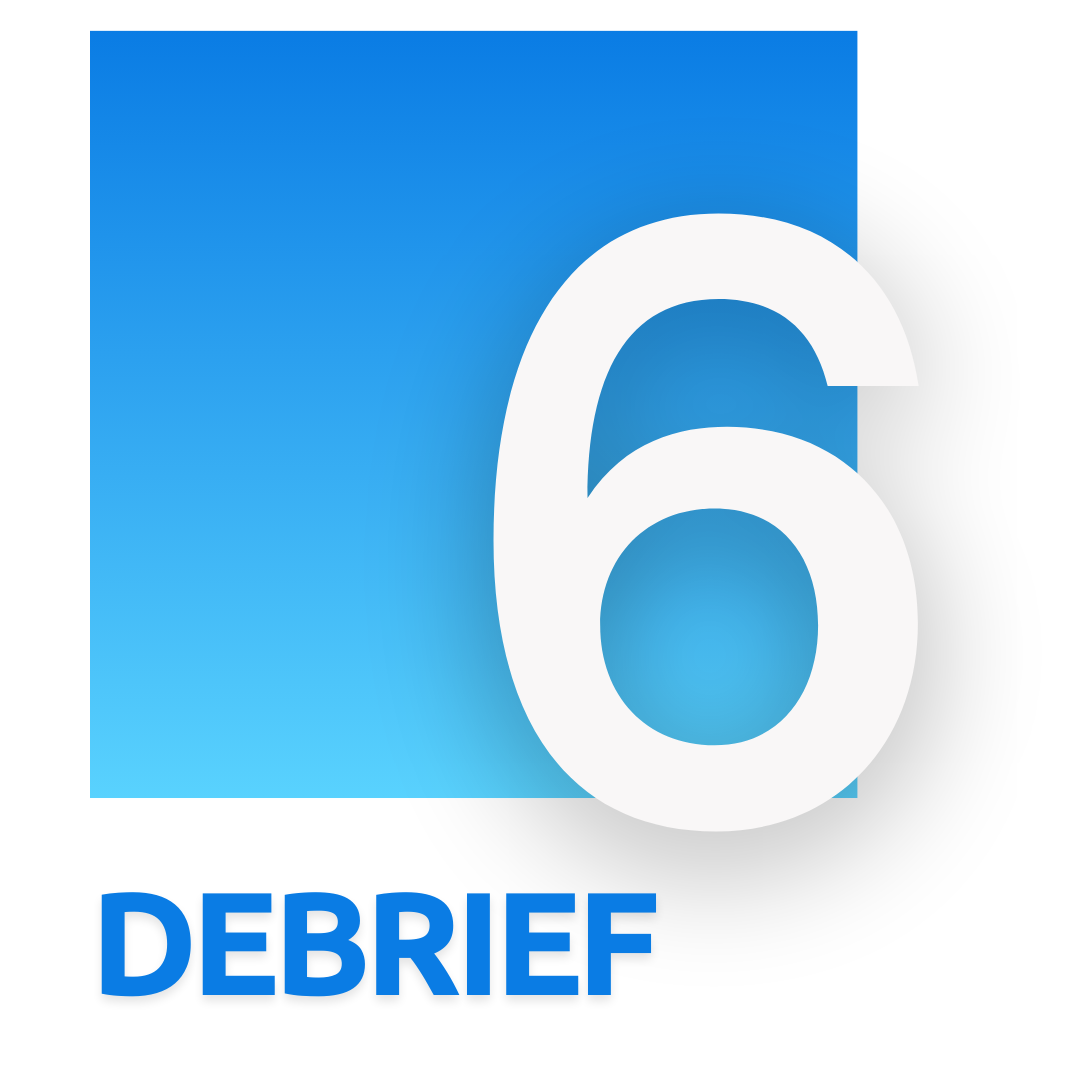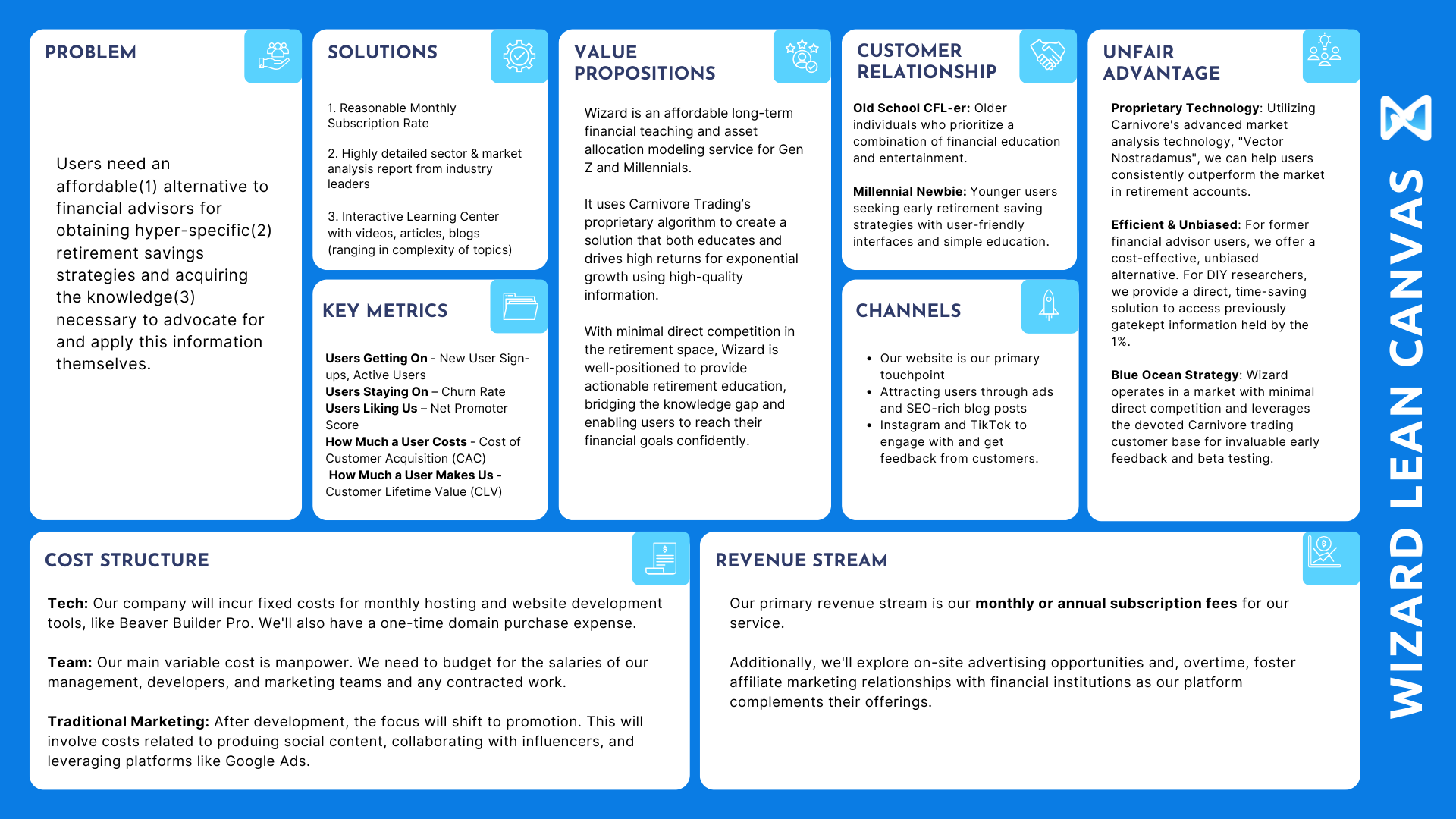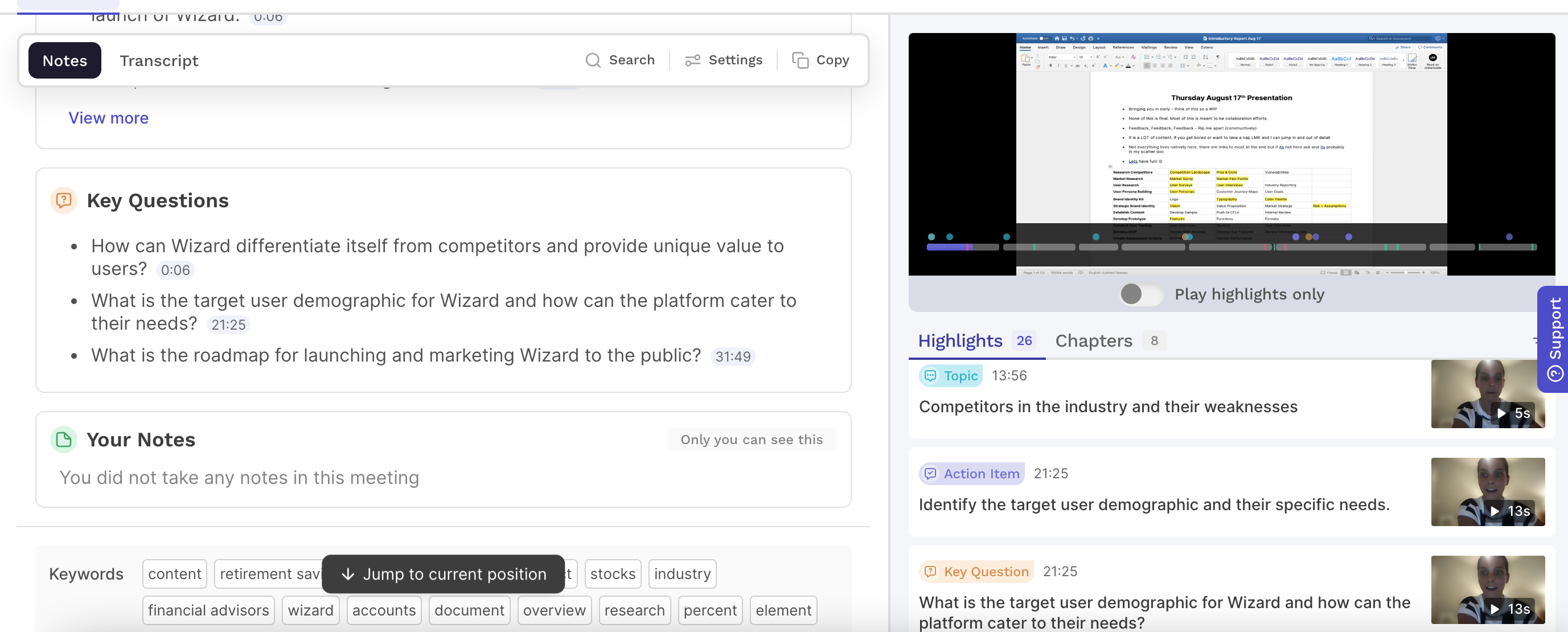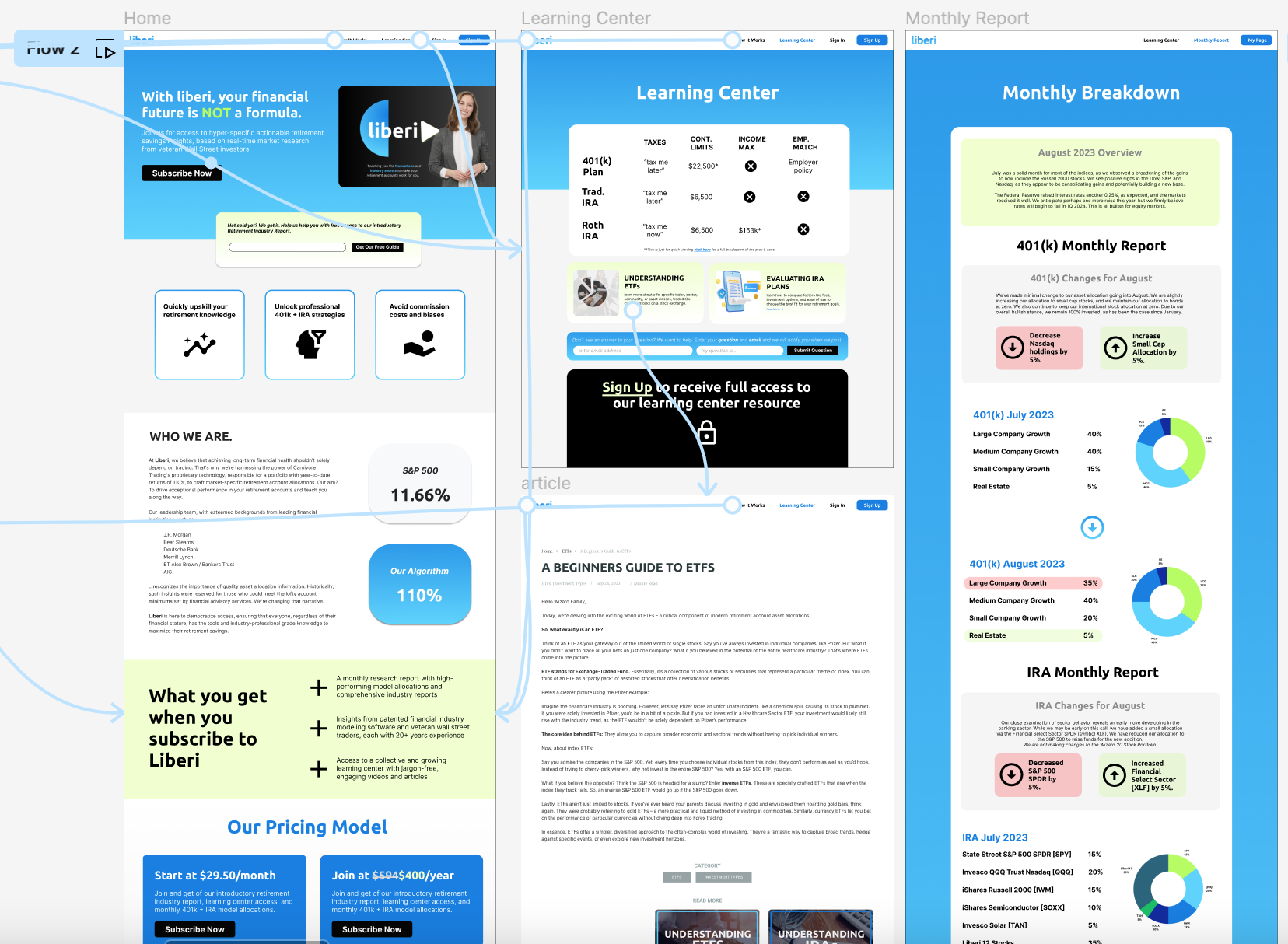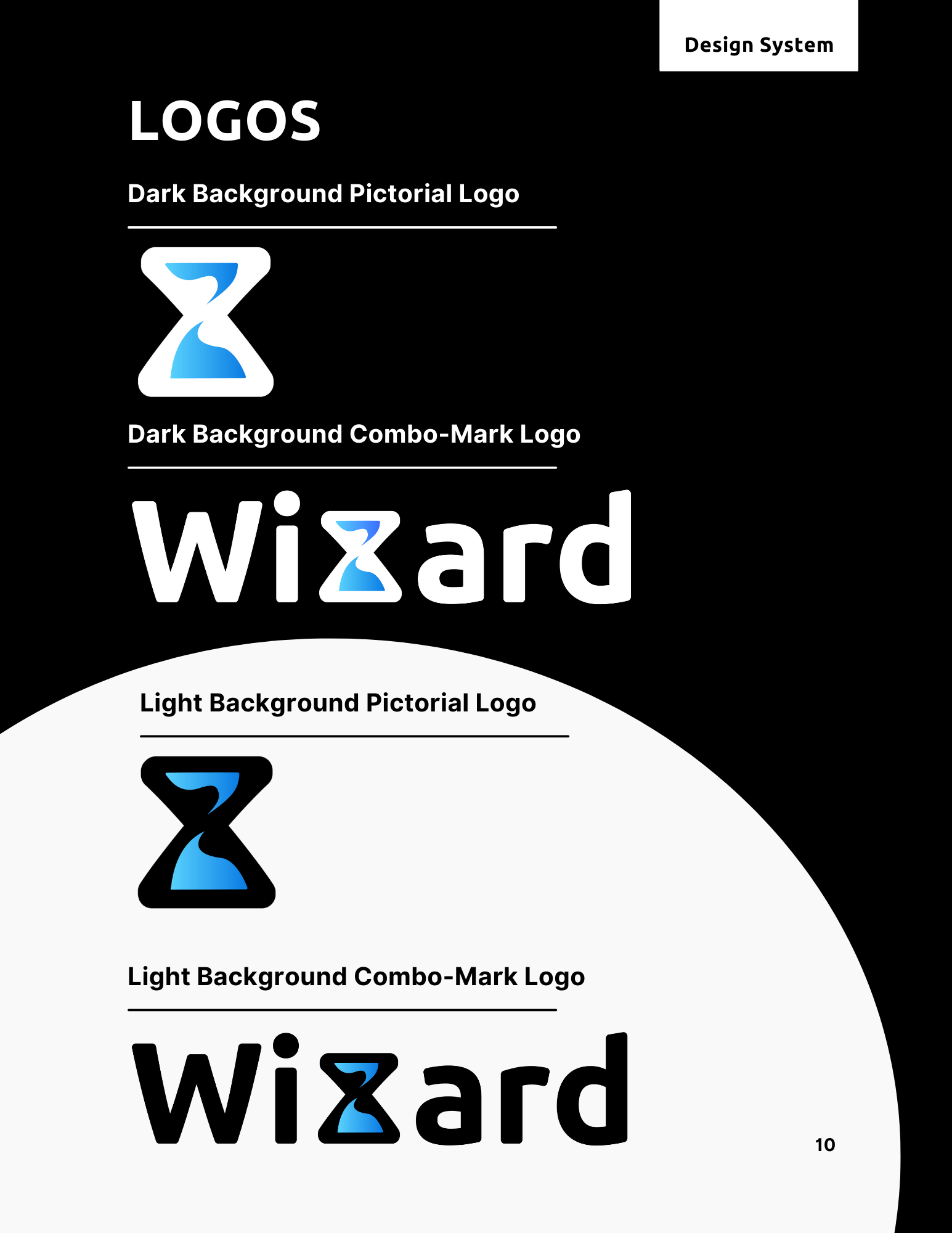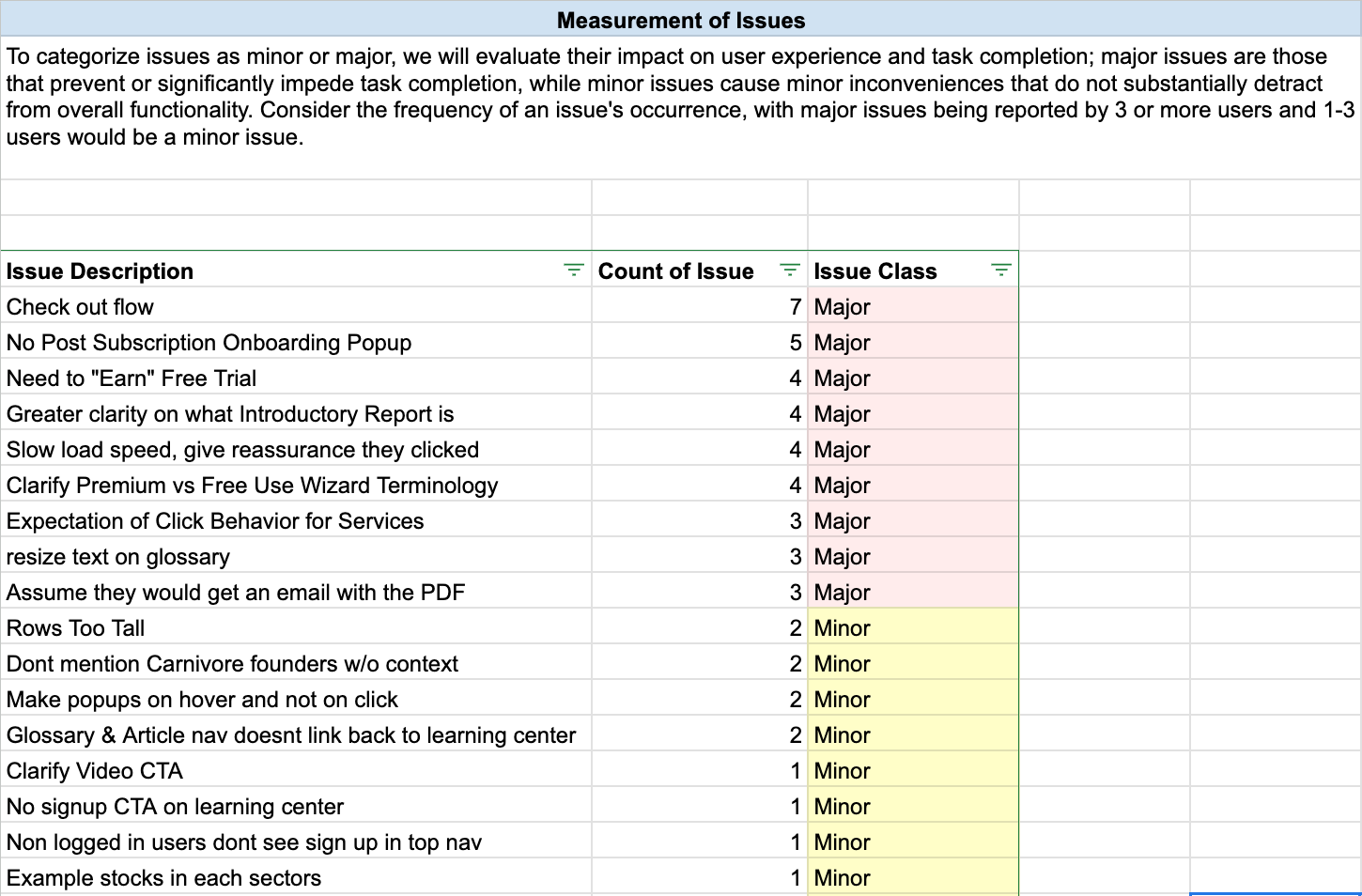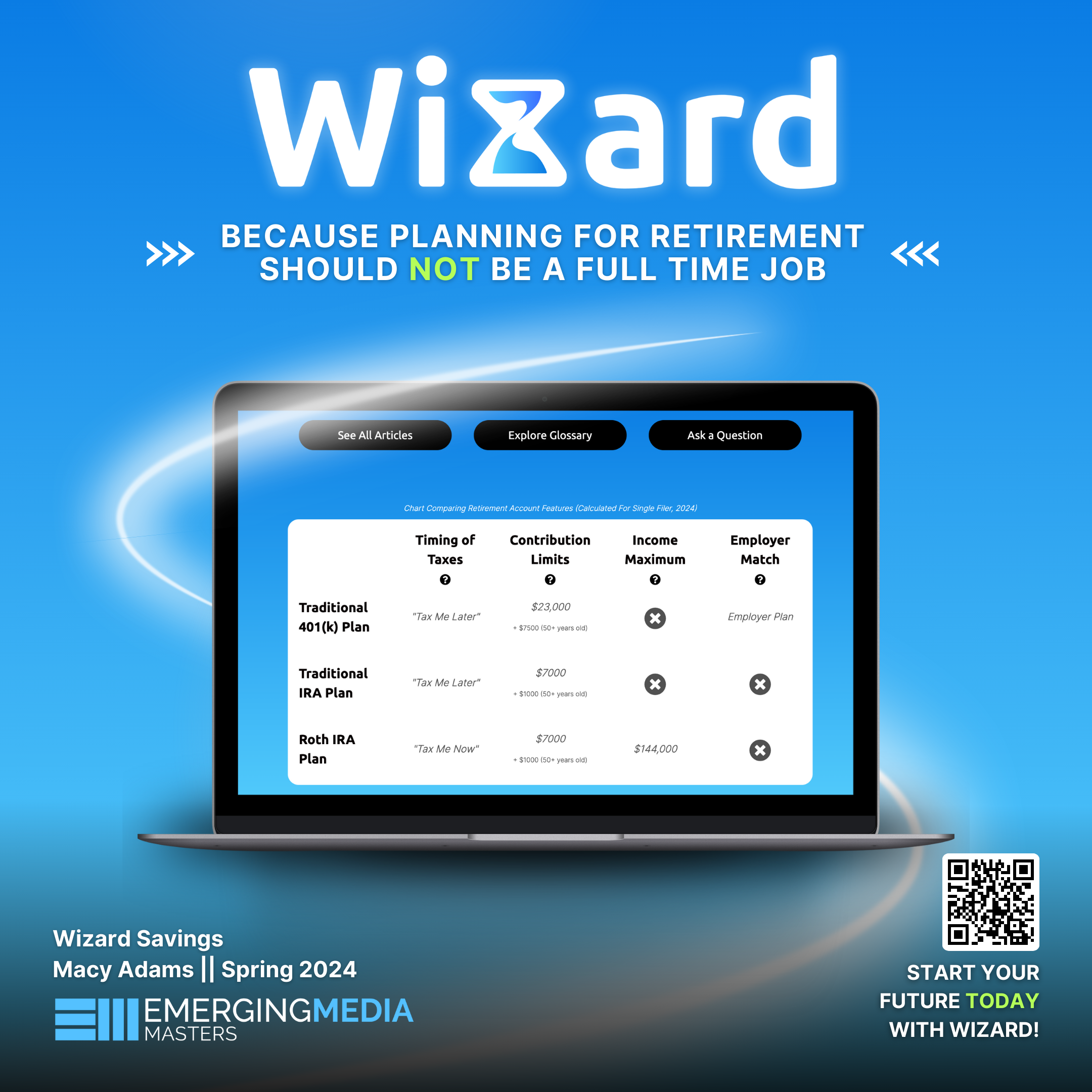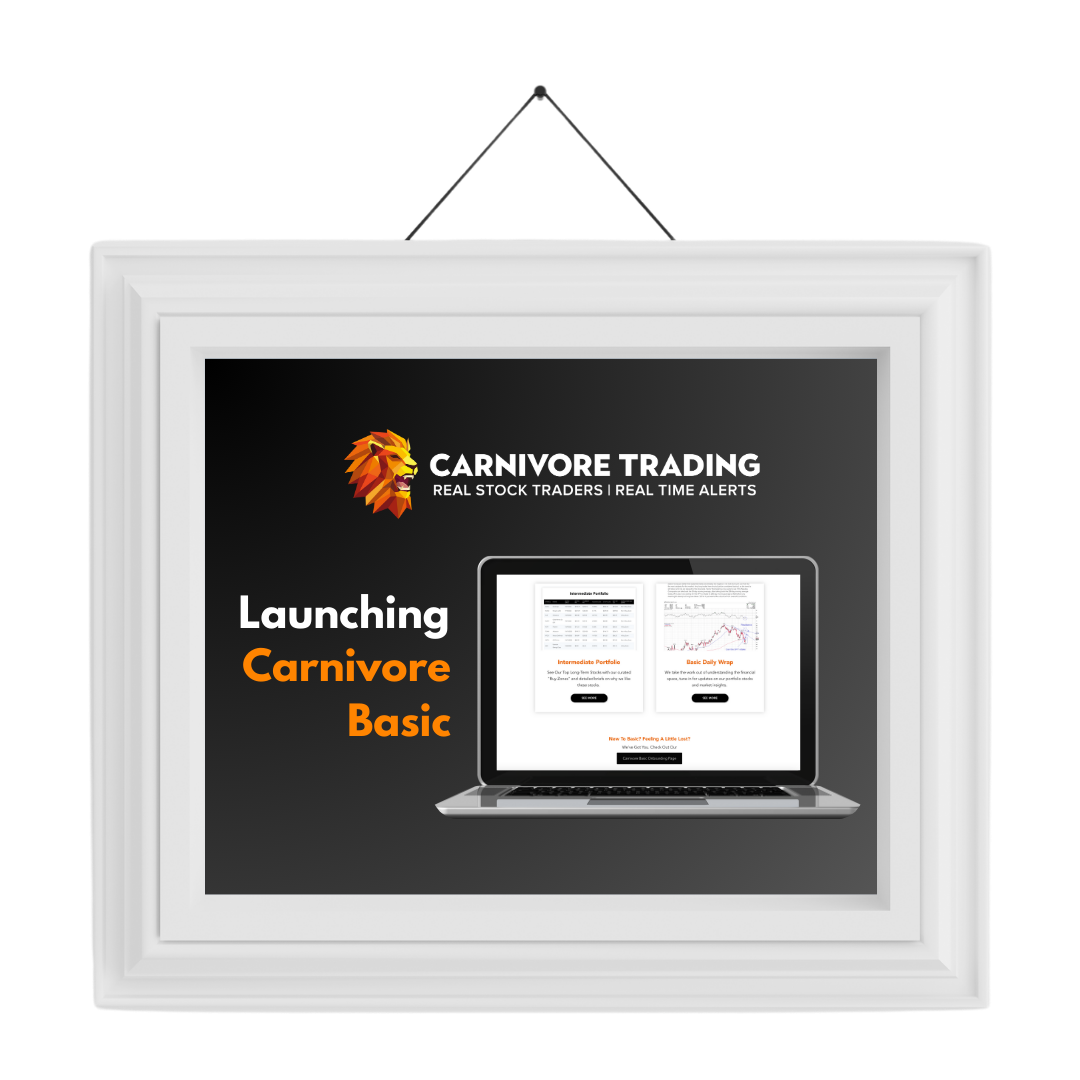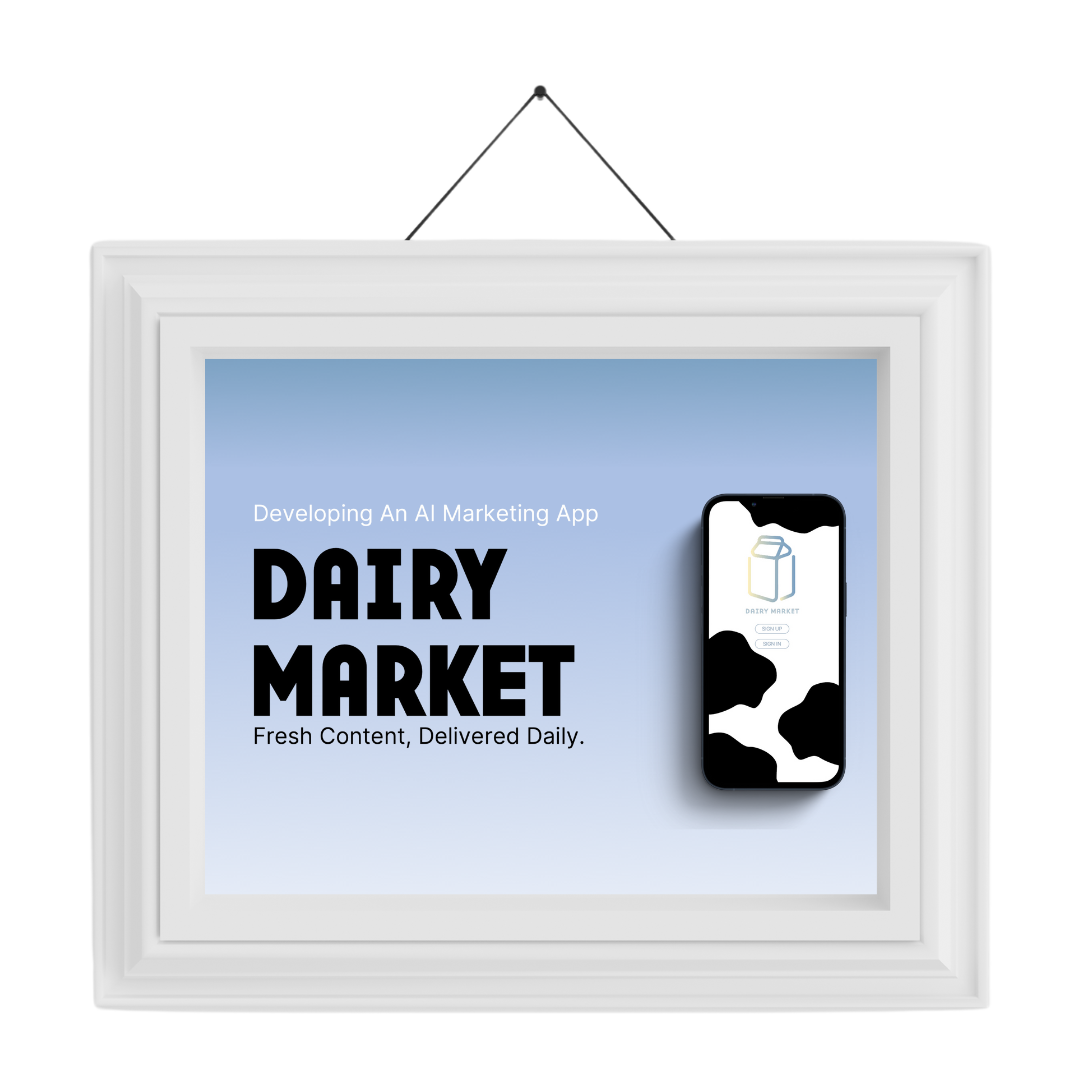Wizard
Creating a web solution to the growing issues in retirement savings struggles with a teaching and model asset allocation subscription service
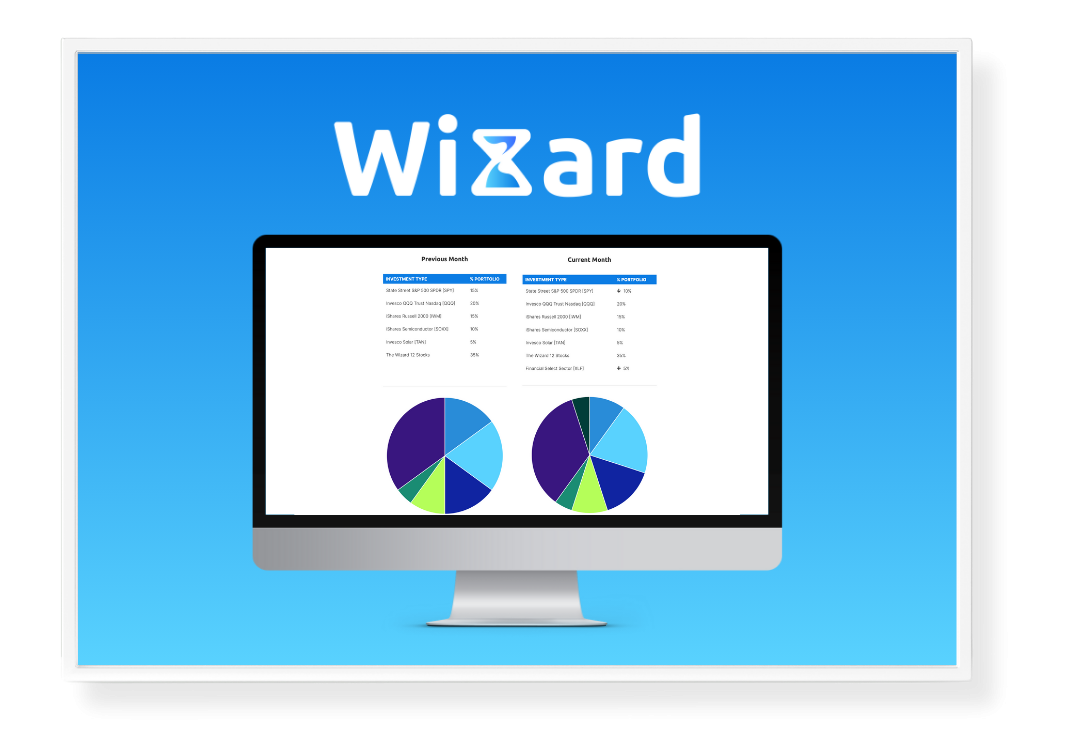
Tools Used
Adobe Express, Adobe Photoshop, Figma, Canva, WordPress, Beaver Builder, Microsoft Excel, HTML, WooCommerce
Skills + Fields
Low-code Developer, Brand Strategy, Branding, Product Development, Content Creation, UX/UI, Asset Creation
Role + Timeline
Product Manager, Developer, Strategist.
Solo Project
Overview
With the Wizard product, I began with an idea for a retirement savings solution that featured financial advisor-quality account research while maintaining accessibility and educational value for actionable decision-making. To achieve this, I partnered with Carnivore Trading, a Swing Trading Subscription Service. Under their umbrella, I established a secondary company aimed at prioritizing long-term financial health for Gen-Z and Millennial demographics.
From a business perspective, bringing this product to life involved developing business strategies using Excel, Figma Workshopping, and Cloud Sharing platforms for sharing deliverables.
From a design standpoint, I created a brand system in Adobe Illustrator and utilized Adobe Photoshop, Figma, and Canva to craft branding assets for the website and external stakeholders.
From a technological perspective, I employed WordPress, Beaver Builder, and WooCommerce to build basic functionality. To further enhance and customize, I created custom front-end design using HTML, CSS, and PHP file manipulation.
From a human perspective, I engaged with over 50 potential users to understand their issues and stories, ensuring alignment with their needs and direction to assist them effectively. (And made some friends along the way)
To frame this extensive process, I aimed to bring this brand to life methodically with forethought and intention. To do so, I structured the Wizard product within a product management framework shown below. Feel free to click a stage and jump to where you are most interested!
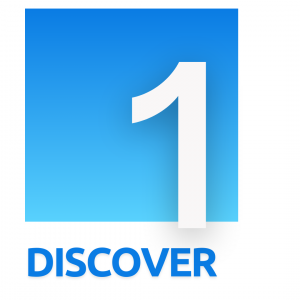
-
Validating User Need
-
Conducting Market + Competitor Research
-
Establishing Strategic Partnership
The first step in the Wizard creation process was to establish that the problem was legitimate and backed by a need in the community. I also wanted to ensure that the problem I was trying to solve was significant enough to be worth addressing and feasible enough for us to tackle effectively.
-
Validating User Need
Who better to learn from than individuals already reaching retirement age?
To assess the current state and gauge satisfaction with the existing retirement path, I looked at those who have reached retirement, and they shared that they wished they had:
- Would’ve saved on a more regular basis (73%)
- Wish they had been more knowledgeable on the topic (66%)
- Waited too long to get started (45%) Source
Following this realization, Wizard’s research focused on deeper investigation in these problem areas, which brought us to a set of four issues in the retirement savings landscape. These four issues include that people aren’t saving, they aren’t saving enough, they don’t know where to learn, and they are worried they won't cross the finish line.
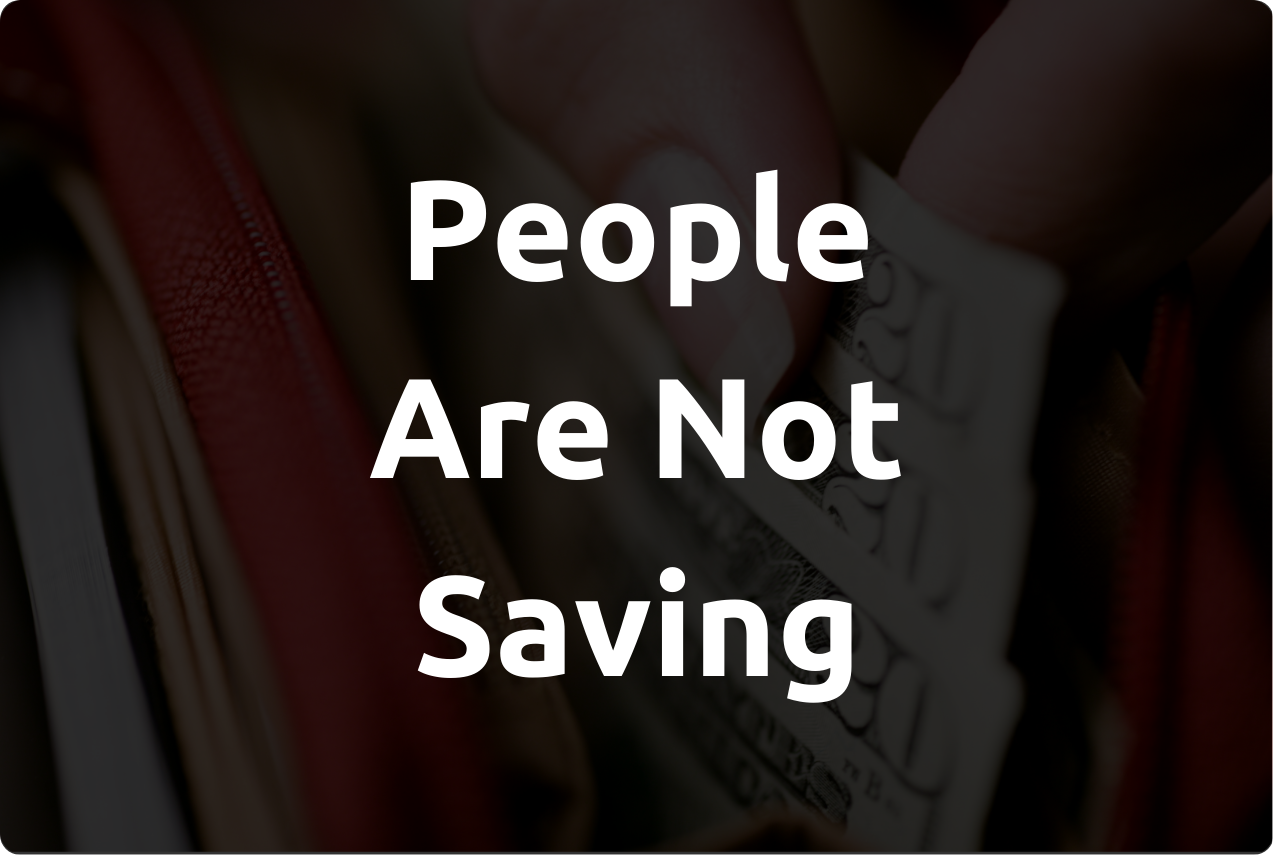
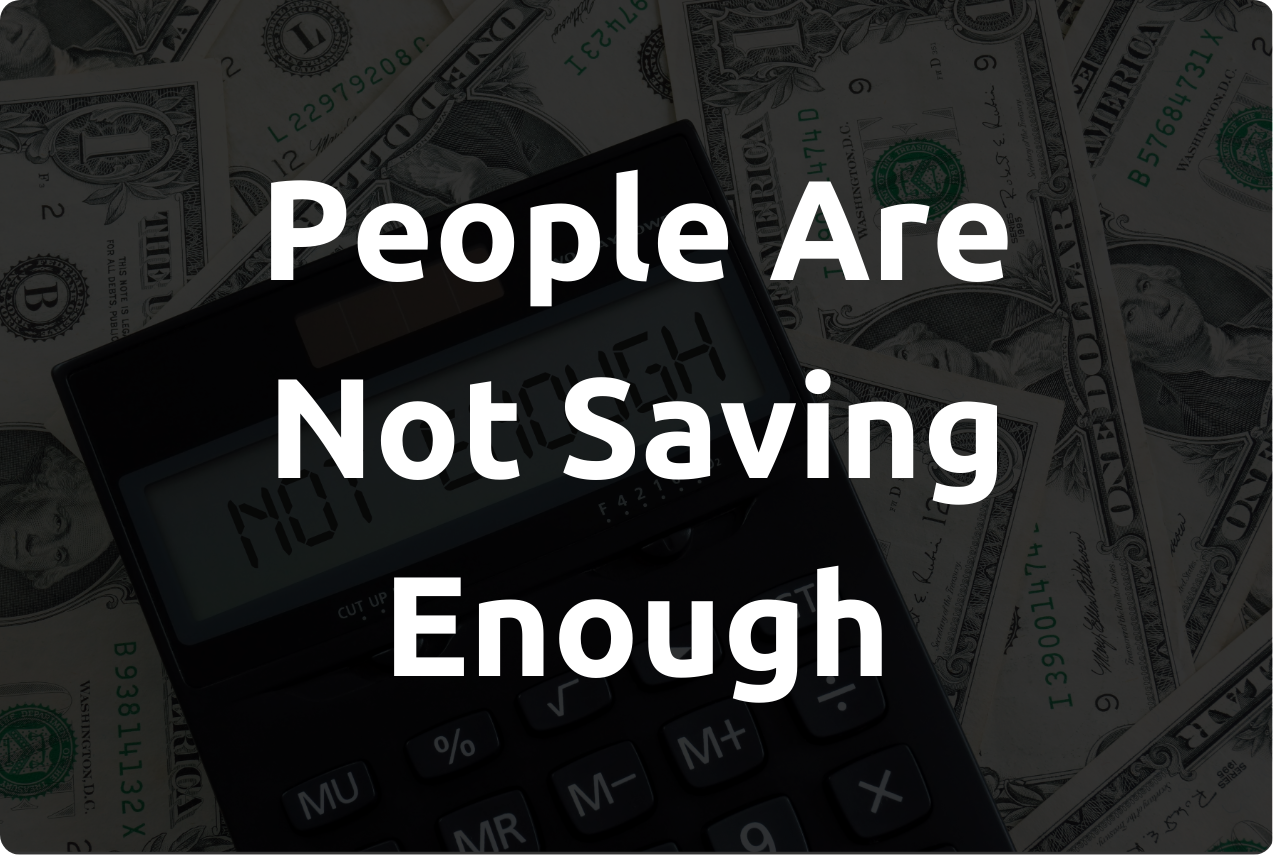
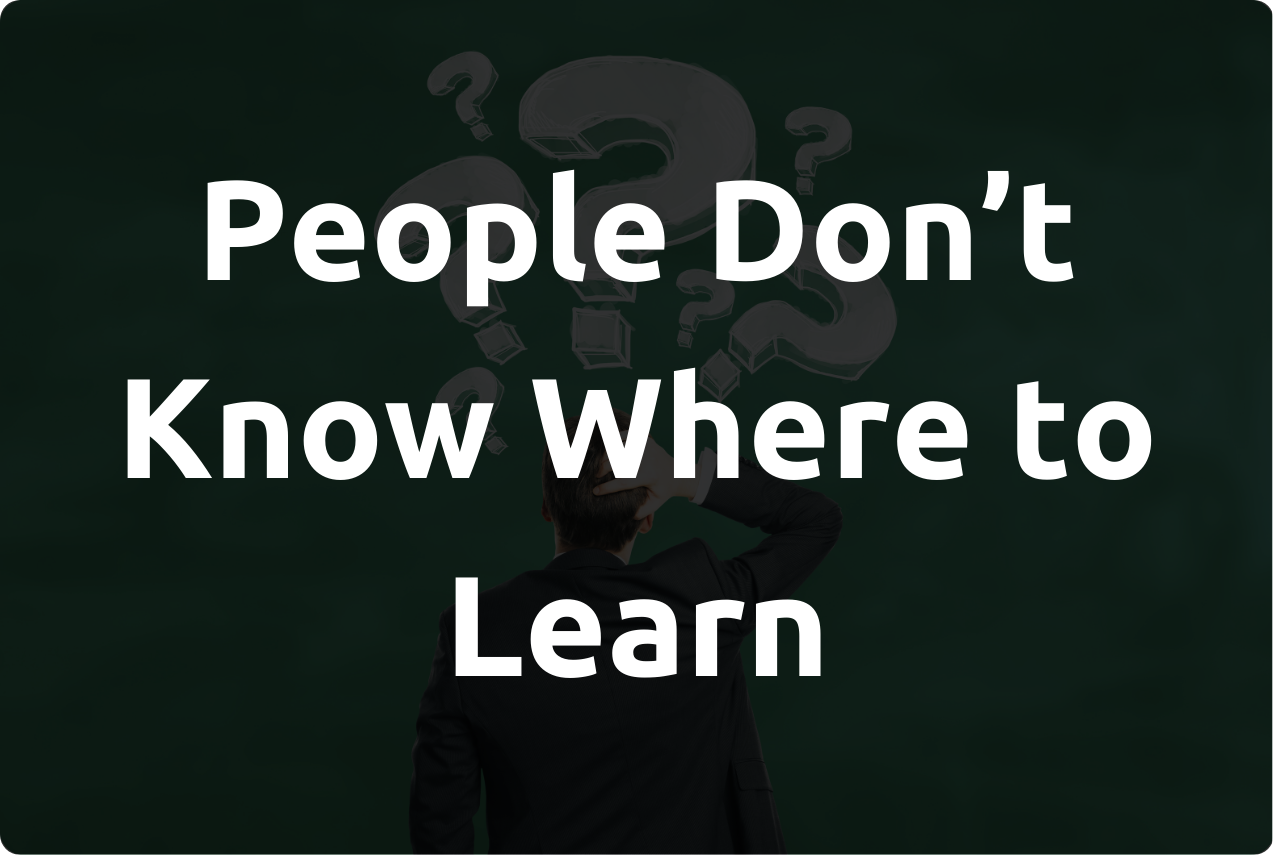
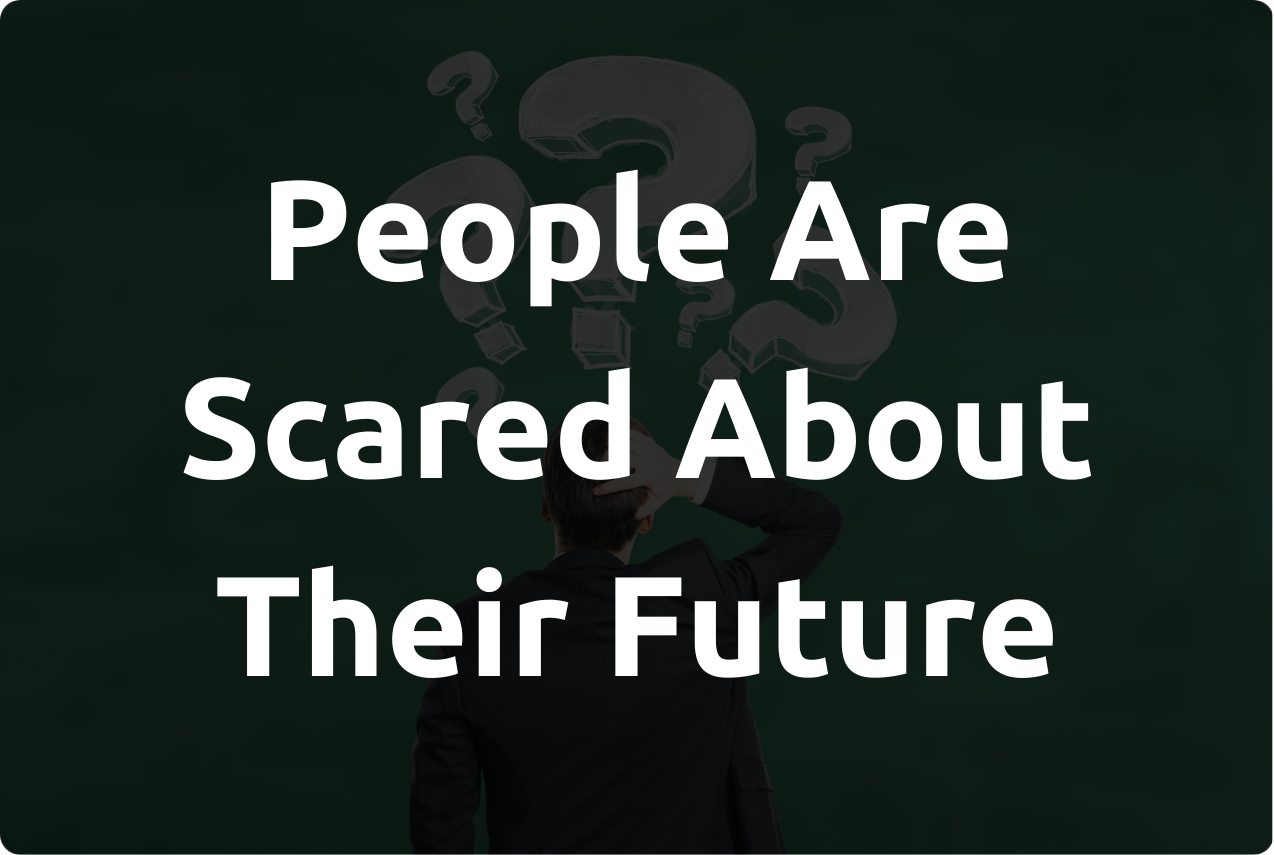
For the full research conducted, please view the research segment of the product pitch.
"How are you saving for retirement?"
Reddit Survey Results
While the online research provided significant validation for user needs in this area, I wanted to hear directly from real people as well. To validate some of the statistics I found, I turned to a source where people often seek advice on social media – Reddit. Here, I conducted a poll to see how people were currently investing (or not), and included an option to gauge the sentiment of uncertainty.
The results showed that a total of 75% of people either didn’t have a retirement account at all (33.3%) or lacked the agency and knowledge to understand how it was being managed (41.7%). To me, this provided the validation needed to confirm the demand for knowledge and the importance of creating a guided path to help people become active participants in their own financial futures.
If these problems existed, why weren't people more inclined to act? Therein lies the key to positioning ourselves as a solution.
The answer I found at its root was fear—a longing for a better reality, but a sense of helplessness and inability to achieve it. As I talked to more people in the community, I learned that this fear leads not to action but to detachment and inaction. This emotional foundation and drive inspired me from the outset.
In a quote by BlackRock CEO Larry Fink, he shared the following message:
“It’s no wonder younger generations, Millennials and Gen Z, are so economically anxious…They believe my generation — the baby boomers — have focused on their own financial well-being to the detriment of who comes next. And in the case of retirement, they’re right.”
So, here, those at the top of the industry are also recognizing this issue.
To assess how to create a better solution, I had to undergo a two-fold discovery process. Firstly, I had to learn what the landscape of options looked like, and secondly, I had to educate myself about the industry to create an adequate user experience around it.
-
Market Research
Where are People Currently Finding this Information?
In the current landscape, individuals seeking information about retirement primarily rely on three sources:
- Family and Friends (40%)
- Online Public Resources and Research (35%)
- Personal, Professional Financial Advisor (34%)
(Note: the survey was a select all that apply) Source
As a subset of competitor research, I examined these three options and their pros and cons, as featured below.
Family + Friends
Free Online Resources
Financial Advisor
Pros:
- Personalised
- Automatic trust
- Teaching the actual material
- Meets you at your education level
- Ability to ask follow ups
Cons:
- May not be accurate
- May rely on outdated information
- Generally less comprehensive
- Not reflective of current market insights
Pros:
- Free
- Allows you to make decisions
- Offers a start to get involved in financial planning with basics
- Learn at your own pace
Cons:
- Time investment of vetting sources
- Feels generic/vague
- Doesn’t give a clear path to become actionable without extreme time investment
- Not always accurate, can be outdated
Pros:
- Specific to your financial situation
- Acts on your behalf to implement these ideas
- Professional advice, timely and informed by industry
Cons:
- Relies on trust of financial advisors knowledge
- Does not lead to learning
- Requires typically 50k+ to get access
- Takes a cut, and thus may have a bias toward their best interest
-
Industry Research
After understanding where people currently find information about retirement, the second step of my two-fold discovery process was identifying the information users need to know.
What is the Information Users Need to Know?
The two most common types of retirement plans are 401(k)s and IRAs. Both of these exist in two varieties — Traditional and Roth. For IRAs, plans require you to invest your capital in the market if you want these accounts to grow. This necessitates knowledge of how to invest properly and provides upward potential for account growth.
For 401(k)s, these are typically company-sponsored with limited investment options, but there are tips and tricks to help you understand your company's policies and other fundamental opportunities.
2023 Quantity of Retirement Accounts (in Millions)
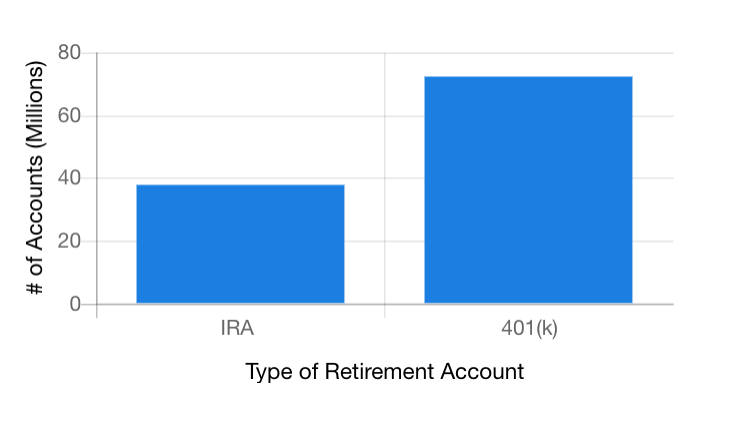
-
Forming Strategic Partnerships
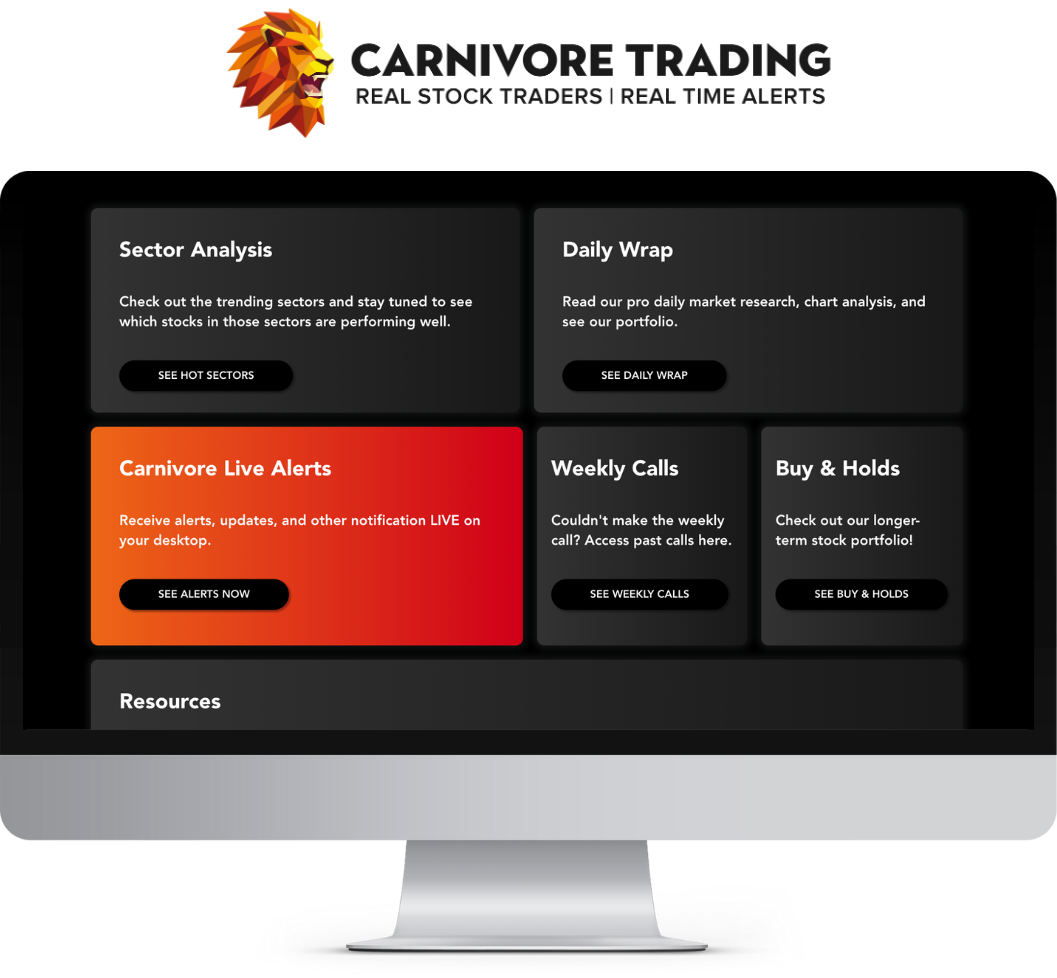
How Can Wizard Provide Financial Quality Information?
As I became more educated on these topics, I started to see an opportunity for a strategic partnership for Wizard. Through networking, I pitched the idea of Wizard to a company called Carnivore Trading. This company started from a group of financial Wall Street investors, leaving these large corporations to democratize access to high-quality active trading information through a subscription service. Carnivore had listened to their users who were interested in financial information that moved slower than the active pace they typically trade. This slower-moving trade behavior is the suggested pace to maximize IRA returns. From here, I knew they would be the perfect collaborator for this project.
-
Finding A Solution
So what did our solution need to do?
After initial meetings with Carnivore Leadership, I knew the goal: offer a solution that combines the specificity and intelligence of a financial advisor with the accessibility and educational value necessary for younger generations to feel comfortable and prepared for their future.
However, at this point, I didn’t want a concrete locked-in product. I instead wanted to focus on the ideas and let the product flow from idea validation in later stages. So, here’s the guidelines we made.
Encourage Planning Earlier
Simplify Retirement Landscape
Create Habits of Saving
Engage the youth with the concept of early retirement planning and the power of compound interest to foster financial prudence.
Provide clear, jargon-free educational reports to simplify the complex retirement savings landscape, enabling informed decision-making.
Deliver account-based, actionable content in monthly communications to create a routine of saving and create an ever-present lens of financial awareness.
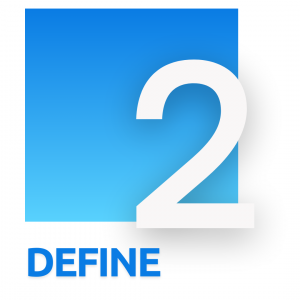
-
Brand Strategy
-
Product Pitch
-
Establishing Product Features
To truly create a cohesive brand, I needed to ensure there was consistency of vision and a united purpose. To achieve this, Carnivore and I met to establish direction and expectations.
Establishing a collective vision early on was a way for us to have a North Star in both strategy and design.
-
Defining Brand Strategy
I led the group in brainstorming vision ideas, discussing principles that came to mind, and considering how we could maximize our existing market. We arrived at this guiding list for our decision-making: Subscriber Empowerment, Democratizing Access to Knowledge, Knowledge Sharing, Inclusivity, Financial Freedom, Personalization, Hyperspecificity of Insight, Measurable Success, Education, Family, Community Building, Quality Market Research, Entertainment, and Helping People. Additionally, we created a list of “how might we’s” and potential obstacles that might impede our progress, questioning our own blind spots with a critical eye.
| Operational “How Might We’s” |
|---|
| How Might We… Optimize SEO strategies to funnel users with these problems to our website? |
| How Might We… Consider education’s distribution location – would this work better in the newsletter or externally? |
| How Might We… Determine if our content lives only natively on our platforms or if we should create articles on external news outlets? |
| How Might We… Tell the users the story of “who we are”? |
| How Might We… Quantify what early success looks like? Metrics? |
| How Might We… Create a standardize solution to prioritize user concerns? |
| Ensuring Value “How Might We’s” |
|---|
| How Might We… Ensure people don’t see this as financial advising but still find it useful? |
| How Might We… Arrive at a pricing model that draws people in most effectively? |
| How Might We… Know whether our content will drive our user to take action and reallocate their accounts? |
| How Might We… Safeguard that this company will be sellable? |
| How Might We… Ensure our content is worthy of monthly payment? |
| How Might We… Select and justify our price point? |
In these discussion and ideation activities, as well as others kept internal for Carnivore stakeholders, I led the team in brainstorming unique business value and identifying early risks and assumptions. Following these discussions, I took the agreed-upon information and created a lean canvas highlighting our unique value proposition and other fundamental pillars to establish our business case, shown to the right.
From here, it was time for me to take the direction we had agreed upon and create and present a full product pitch to the leadership team of Carnivore Trading.
-
Stakeholder Product Pitch
Guided by the Lean Canvas, I presented a compelling business case to the Carnivore Trading leadership team, demonstrating the viability of the idea with the product pitch document. I also introduced three core features for testing with early potential users: an introductory industry report, a learning center, and a monthly report.
-
Choosing Product Features
In this meeting, we also collaborated to refine these ideas and refine the features that would work best for our solution. Here are the three finalized features we agreed upon:
Introductory Industry Report
Learning Center
Monthly Report
This report is a gateway for new clients, providing critical knowledge to understand the value of our more detailed monthly reports. It serves as a value-packed starting point for those new to retirement planning, capturing interest through account education and an explanation of how Wizard benefits account returns in exchange for an email sign-up.
The Learning Center is our engagement hub, appealing to users seeking both understanding and ideas to inspire critical thought on their financial choices. It’s a strategy to both educate and build trust, demonstrating our responsive and humanized approach as a key differentiator.
Our monthly report delivers the core value of our service, striking a balance between comprehensive analysis and time-efficient consumption. It is tailored to busy individuals seeking informed, concise guidance for their retirement planning (401k, IRA, long-term stock holdings, & more).
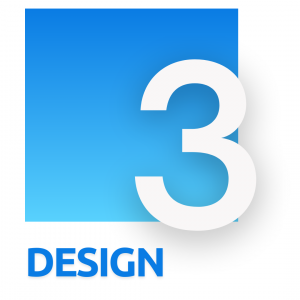
-
UX Research & MVP Development
-
MVP User Testing
-
Design System
Using these guiding principles as a north star, I started to design features agreed upon in the product pitch and worked on assembling an MVP. To get started it was time for me to start brainstorming how to prototype something that would satisfy the business goals and adhere to the highest UX standards. I began by researching UX trends for homepages, conversion points, and elements that increase engagement. Then, I sketched many different versions of what our site could look like. At this point I created a prototype of the 3 main agreed upon features and found users in this customer segment to test out a Figma mockup of what our product could potentially look like.
-
MVP User Testing
After generally gauging interest in the idea, I found several test users to give insight on the MVP on and how this proposed technical product would benefit them. I learned a lot, but to simplify, here were some of the biggest findings:
- Users were not willing to consume anything that seemed long or hard to implement
- Users had very limited knowledge, and they wanted more structure to learn
- Users would be willing to give it at least a trial if there was one
However, despite issues with our early MVP discussions with these potential users, they shared that the ideas and interest would be viable and promising for a product. With this assurance of promise with the idea and core value, I decided to establish our design system and start creating a web platform.
-
Design System
In order to create a brand guide that elevated our design beyond pretty colors, I wanted to start at the heart of our brand. Here, I used our mission and intended voice to design our color palette, typography, logos, usage guidelines, and start to build out a component library.
Mission
To democratize access to industry-leading retirement market insights and principles, empowering individuals to build a path to long-term financial wellness.
Voice
For many individuals, family is the source of information on financial topics that the education system doesn't cover. To be an effective mouthpiece for sharing this information, we want to embody the warmth, trustworthiness, and engaging touch of a family figure - with the added benefit of being some of the top talent in the investment space. Thus, we want to create a Wizard family with engaging, fun content backed by expert knowledge.
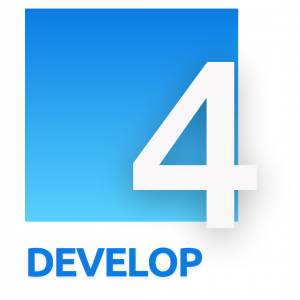
-
Product Roadmap
-
Product Engineering & Development
-
Intensive User Testing
For the development process, I needed to start by planning timelines and creating internal deadlines to accomplish a lot of work in not a ton of time. However, different roadmaps were necessary to create a timeline for the business stakeholders, and a technical development timeline.
Following development of these timelines below, it was time to dive in. For me, one of the keys has been not creating and coding our product in a silo. For several months, I developed the core functionalities of the product. Using this product in phase 2, we conducted intensive user testing to refine and redesign.
-
Product Roadmap
| Deadline | Development Content |
|---|---|
| September 17, 2023 | Project Brief |
| September 24, 2023 | Landing Page Structure + Navigation Menu Alpha |
| October 1, 2023 | How to Use Page + Sample Report Alpha |
| October 8, 2023 | Learning Center |
| October 15, 2023 | Landing Page Video + Brand Asset Creation |
| October 22, 2023 | Sign Up Prototype + Introductory Report Download Functionality |
| October 23, 2023 | ALPHA Presentation of Alpha product |
Phase 1 Roadmap For Developers
| Deadline | Development Content |
|---|---|
| October 29, 2023 | Flesh Out Pages + Add Functional Buttons |
| November 5, 2023 | Introductory Report Content + 2-3 Sample Learning Center Articles |
| November 12, 2023 | Functional Login + Video Improvements |
| November 19, 2023 | Monthly Report Improvement + Email Automation |
| November 26, 2023 | 2-3 more articles + Question Submission |
| December 8, 2023 | Beta, Submission of Beta Product |
Phase 1 Roadmap For Developers
-
Product Engineering
Working with a company, they shared a preference that I develop this product with their tech stack. In the past, I had been more familiar with an HTML/CSS/JavaScript toolbox, but they use different tools. While this was a LARGE learning curve, I tapped into the wealth of resources available and committed to leveraging them. To understand the basics, I watched WordPress and Beaver Builder tutorials on LinkedIn Learning and engaged with the Carnivore developer group to ask more complex questions.
By the time I created the beta product, I had created a product that I knew was rough around the edges but had been so deep in the creation process that I needed to turn to user testing to get a fresh perspective on what needed additional work.
-
Product User Testing
For the User testing process, I recruited people from our aforementioned User persona, but as I developed the Wizard product, I realized there was a sub-market of individuals from Carnivore, a completely different user demographic, that I also wanted to test the product with. Here, Carnivore users represent an older demographic with a greater interest in entertainment and actionable account asset allocations.
During user testing, I gathered both qualitative and quantitative data by conducting pre-test surveys. I also measured the system usability scores and time taken to complete 10 different tasks. Additionally, I maintained an issue register to classify major and minor issues. Finally, I collected post-test surveys to gather qualitative and quantitative feedback on the product.
The issue register we collected became the go-to resource for systematically tackling all of our largest issues and potential blindsides.
| Deadline | Development Content |
|---|---|
| February 28, 2024 | Finish User Testing + Results Analysis |
| March 20, 2024 | Restructure Articles + Add Educational Content |
| March 27, 2024 | Product Page Creation + Streamline Checkout Process |
| April 3, 2024 | Build Onboarding Flow + Improve Home Page User Issues |
| April 10, 2024 | 1.0 Completion + Revised Industry Report |
Phase 2 Roadmap For Developers
From this user testing, we realized the product was functional and had clear architexture for how to achieve goals. Testers in both demographics found our product easy to use, clean and minimal. Additionally, with products having a national average of 68% on the system usability scale, Wizard's score of 91.6% performed well above average.
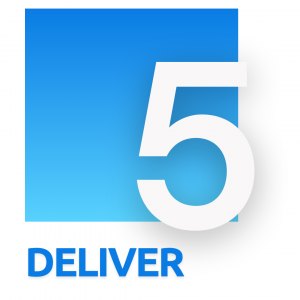
-
Product User Testing
-
Product Ready For Launch
-
Digital Marketing Asset Creation
In the final stage of our project, my focus was on systematically tackling the items on this issue register and starting to focus on digital storytelling.
-
Product User Testing
User Testing revealed there were many opportunities to streamline and make the process more clear. The signup process was cumbersome, people signing up felt lost after the transaction, and they felt our home page still didn't do enough to "earn a free trial."
This pointed to the largest issues existing in the "User Wants To Purchase Subscription" User Case. To fix this I had to do a lot of custom coding and change redirects in the Website's, but as a core process I wanted this flow to give them no reason NOT to try Wizard.
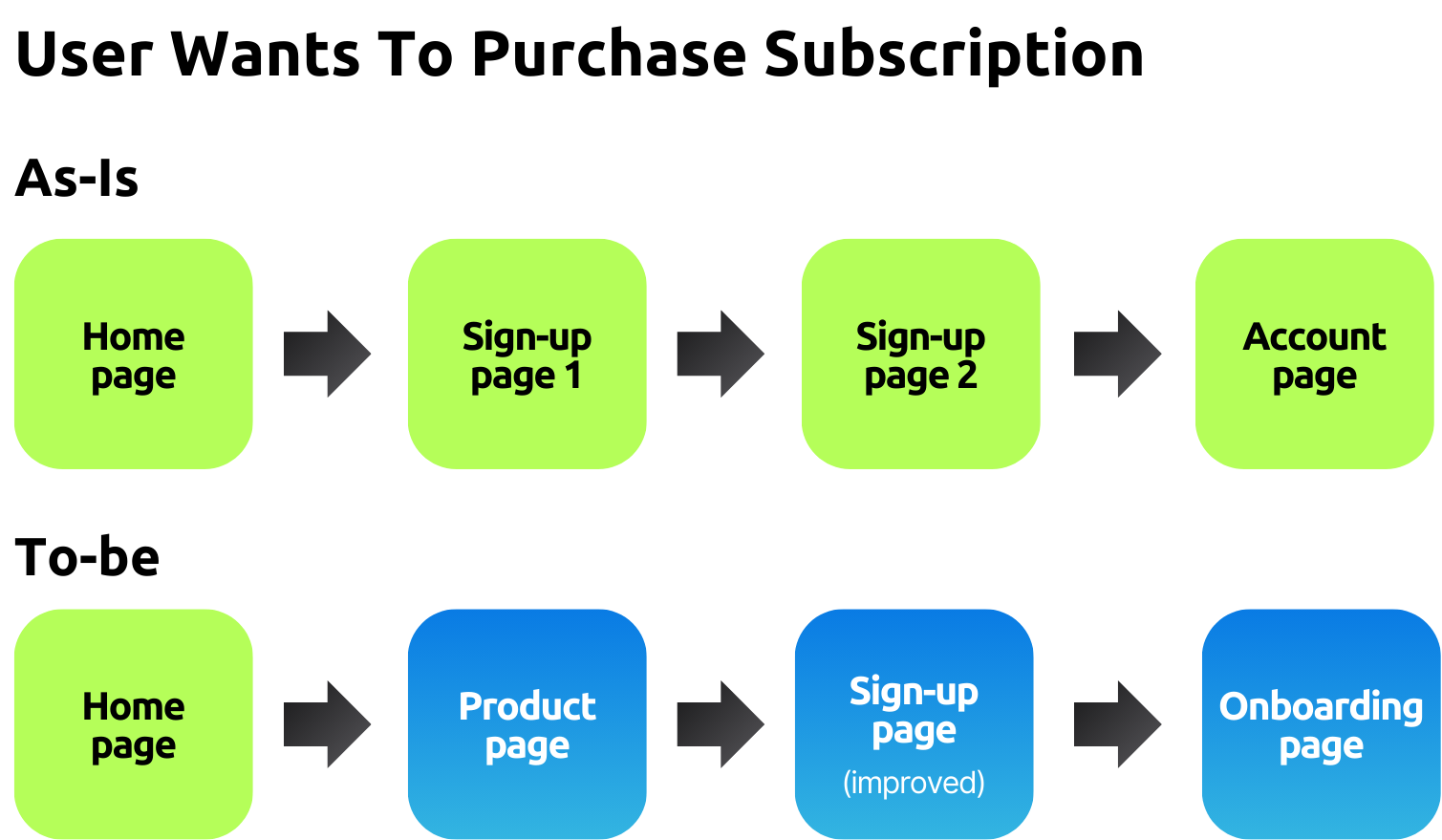
-
Digital Marketing Assets
Following the revisions from user testing insights, we wanted to create posters and videos that would serve as a platform for us to communicate how we could help our users feel more confident about their retirement. We aimed to alleviate their retirement fears and offer them support. One of the most important steps in this process was to get out into the community and let people know that we are there to help. So in this phase I created three main assets for our project presentation: poster, a product trailer, and detailed product presentation.
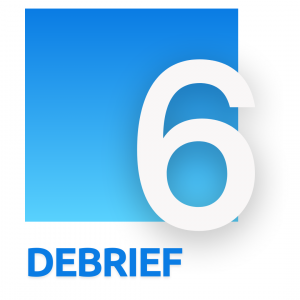
-
Product User Testing
-
Product Ready For Launch
-
Digital Marketing Asset Creation
So far, Wizard and what it stands for has been a way to show Carnivore Trading an opportunity for growth and expansion and prove the value of user-centered design.
Regarding outcomes, I successfully developed a research report and a homepage featuring an engaging UX/UI. I created a comprehensive Learning Center that includes a glossary, easy-to-navigate tables, calculators, and beginner-level articles. Our Report Center offers users a dynamic platform for engaging with information, incorporating educational components within the reports and integrating functional login and subscription management systems. Moreover, Carnivore leveraged this product pitch in the real world to support our fundraising efforts for 2024.
Throughout this process, this commitment to issue validation, leading decisions with user feedback, and pre-establishing an identity to adhere to have benefited the company. The pitches created and developed with Wizard were one of the elements used in their pitch to secure fundraising for their 2024 year. It has been incredible to learn from them in a high-moving, high-performing startup environment and I hope this product can one day come to market as part of the Carnivore Trading ecosystem.
